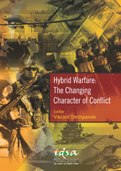Nuclear Implications of the ‘Two Front’ Formulation
The nuclear ‘backdrop’ carries dangers even in a single front let alone a ‘two front’ situation, particularly since a move to rescind the NFU tenet of doctrine may be necessary.
- Ali Ahmed
- January 29, 2010










